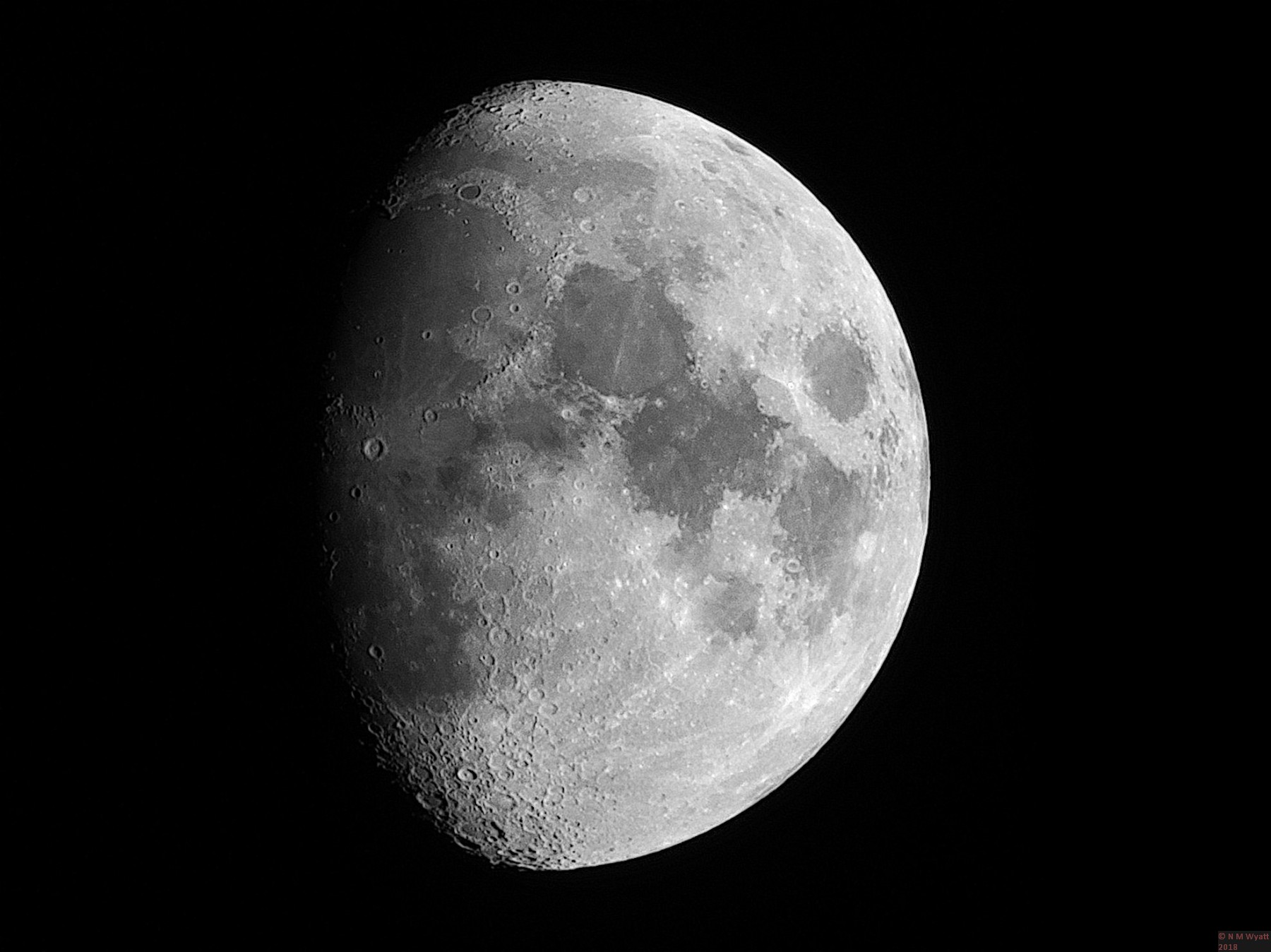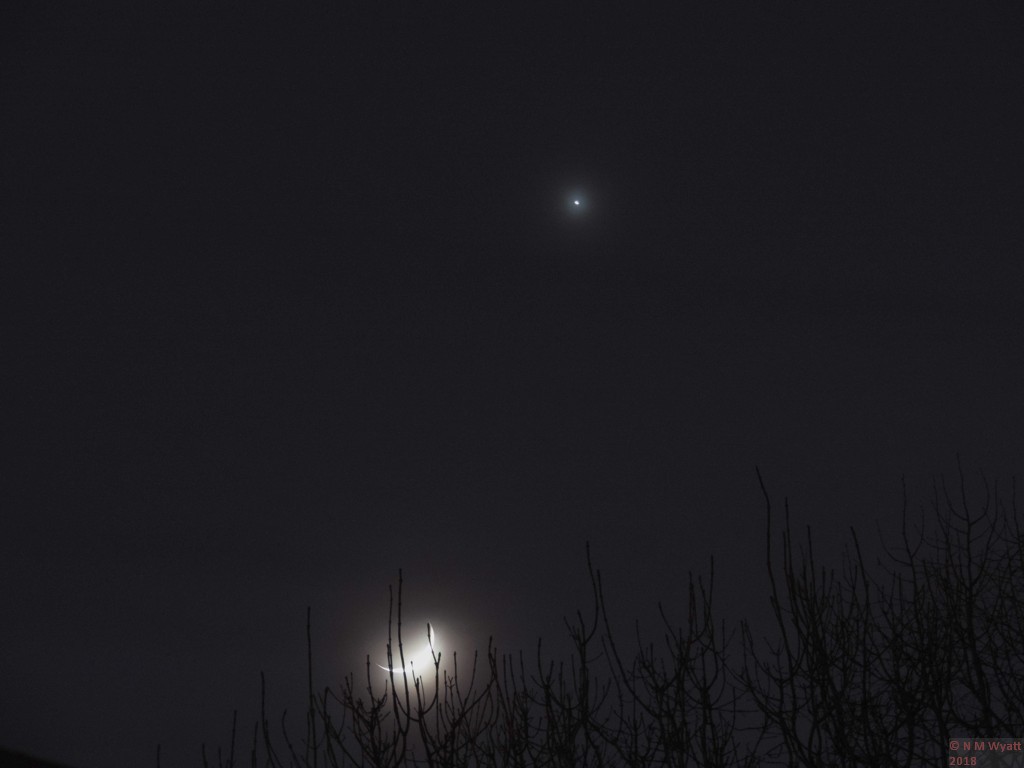If you find this website useful, please check out my books or visit my Amazon Author page. Or even Buy Me a Coffee!
Astronomy
Astrophotography
You are never too old to learn, and one of the thing that has opened my eyes has been discovering the quality of astronomical images that can be produced by amateurs with very modest equipment. By using digital cameras and image processing software it's a realistic ambition to produce images that compare favourably with those produced by the world's biggest telescopes fifty years ago - right in your back yard!
This website does not showcase the best astronomical pictures on the internet! It's a selection of pictures I have taken myself with basic equipment and free software. Producing images like these below, or even better ones, is within your reach!
Most importantly, you don't have to spend a fortune. My first serious scope, mount and tripod cost £180 on Ebay. I spent £40 on a more solid tripod, and about £200 on various bits and pieces including books and an ancient Canon EOS DSLR and a seconhand Microsoft HD Webcam. The results shown before are some of my best so far, and will be updated from time to time.
Perhaps the easiest target in the sky is the moon. You can get good pictures with any long or zoom lens, this is a 'stack' of six pictures taken with an ordinary bridge camera:
A gibbous moon photographed on the isle of Skye.
Follow the links below for introductions to some of the other things you can image in the night sky:
A Conjunction of Moon and Venus
M100 is a face-on spiral galaxy in the Virgo Cluster, althouigh it is technically placed in the constellation Coma Brenices. It has well-defined spiral arms and was one of the spiral galaxies listed by Lord Rosse. The image below also contains many smaller galaxies.
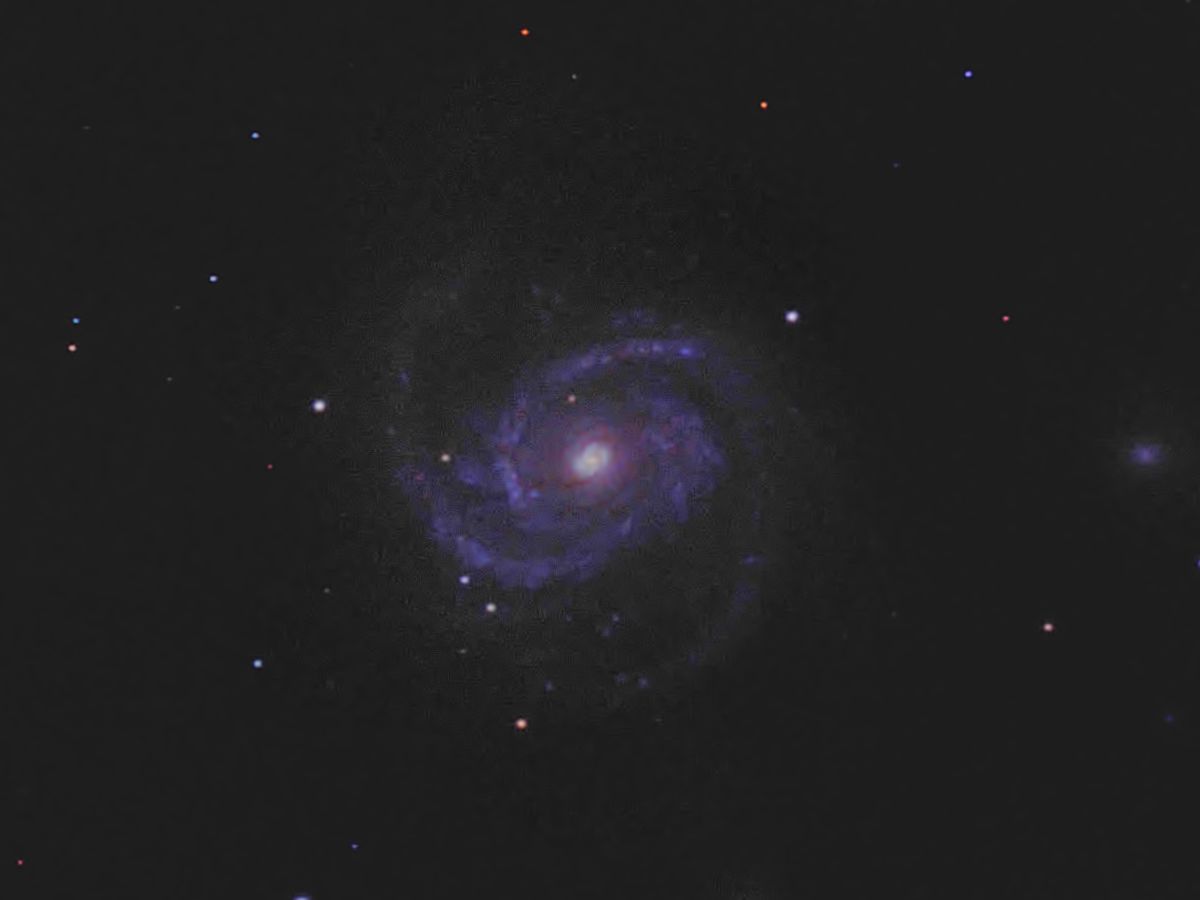
M100
- Details
- Category: Astrophotography
M105 is a galaxy in Leo which is known to have a supermassive black hole at its centre. It is part of the M96 galaxy group.
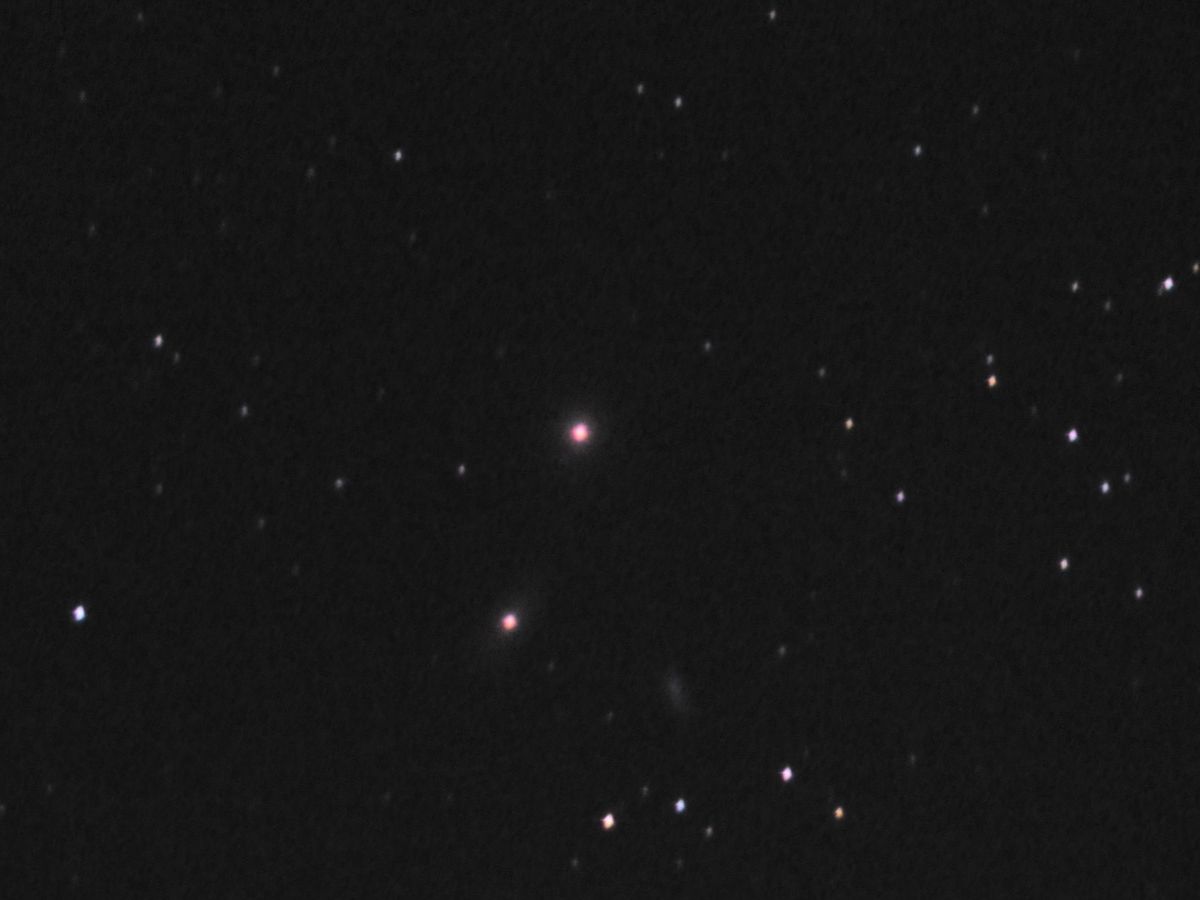
M105 (top) is near to the galaxies NGC3384 (left of the triangle) and NGC3389 (faint fuzzy at lower right of the triangle).
- Details
- Category: Astrophotography
M96 is a galaxy in the constellation of Leo. It is part of the M96 galaxy group.
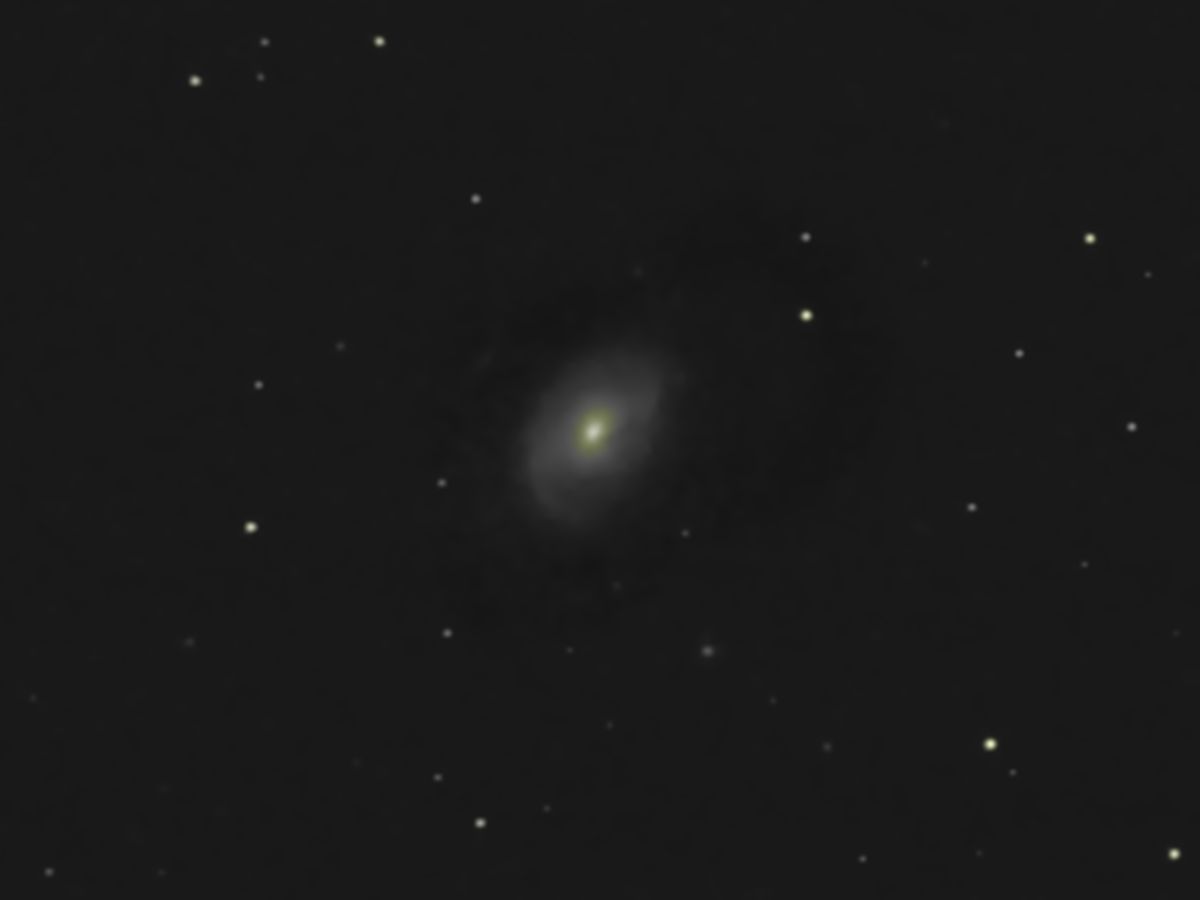
M96, a galaxy in the constellation of Leo.
- Details
- Category: Astrophotography
M95 is a galaxy in the constellation of Leo. It is part fo the M96 group of galaxies.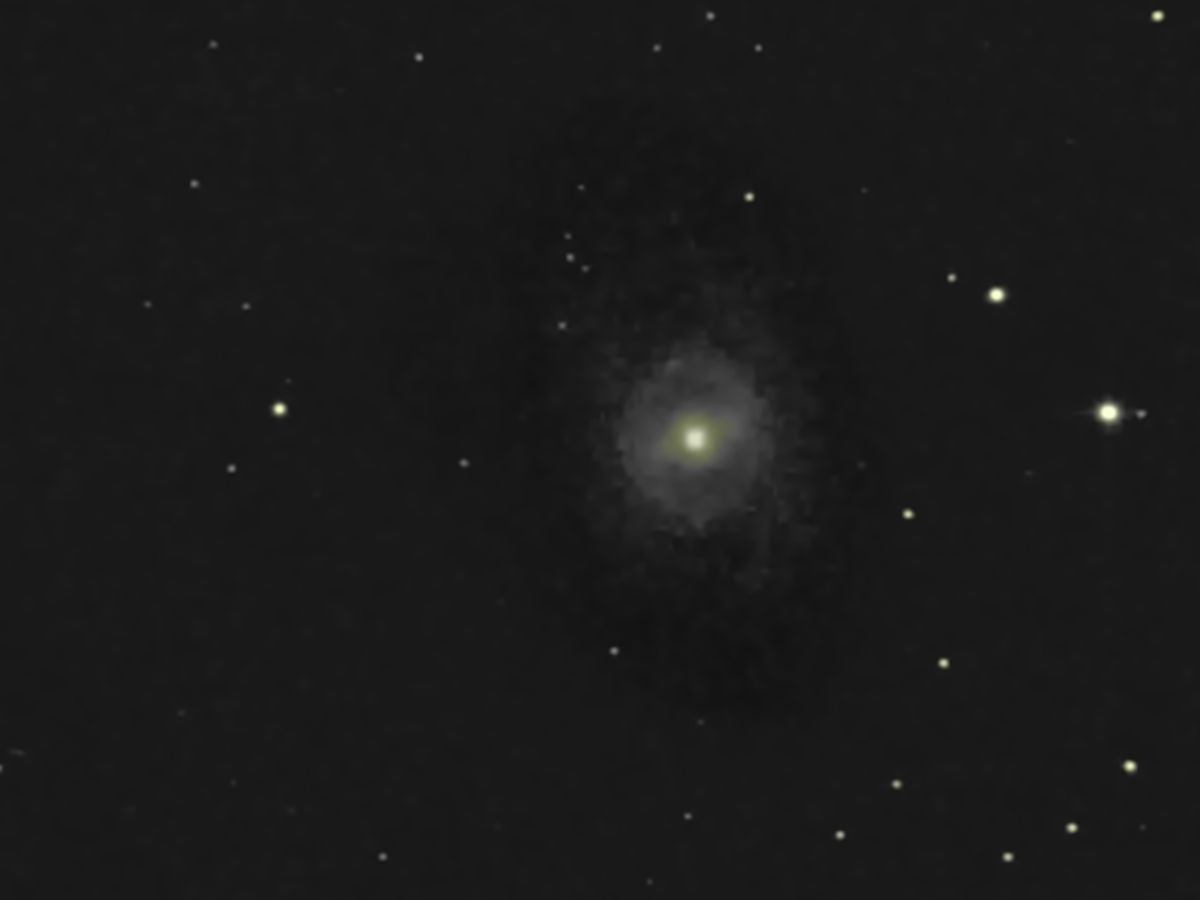
M95, a galaxy in Leo.
- Details
- Category: Astrophotography
M66 is a spiral galaxy in the constellation of Leo, closely associated with two other galaxies M65 and NGC3628. Together these are known as the 'Leo Triplet' and they are actually relatively close to each other in space. Compared to M65, M66 is much bl;uer, especially in its arms, as a consequence of much new star formation.
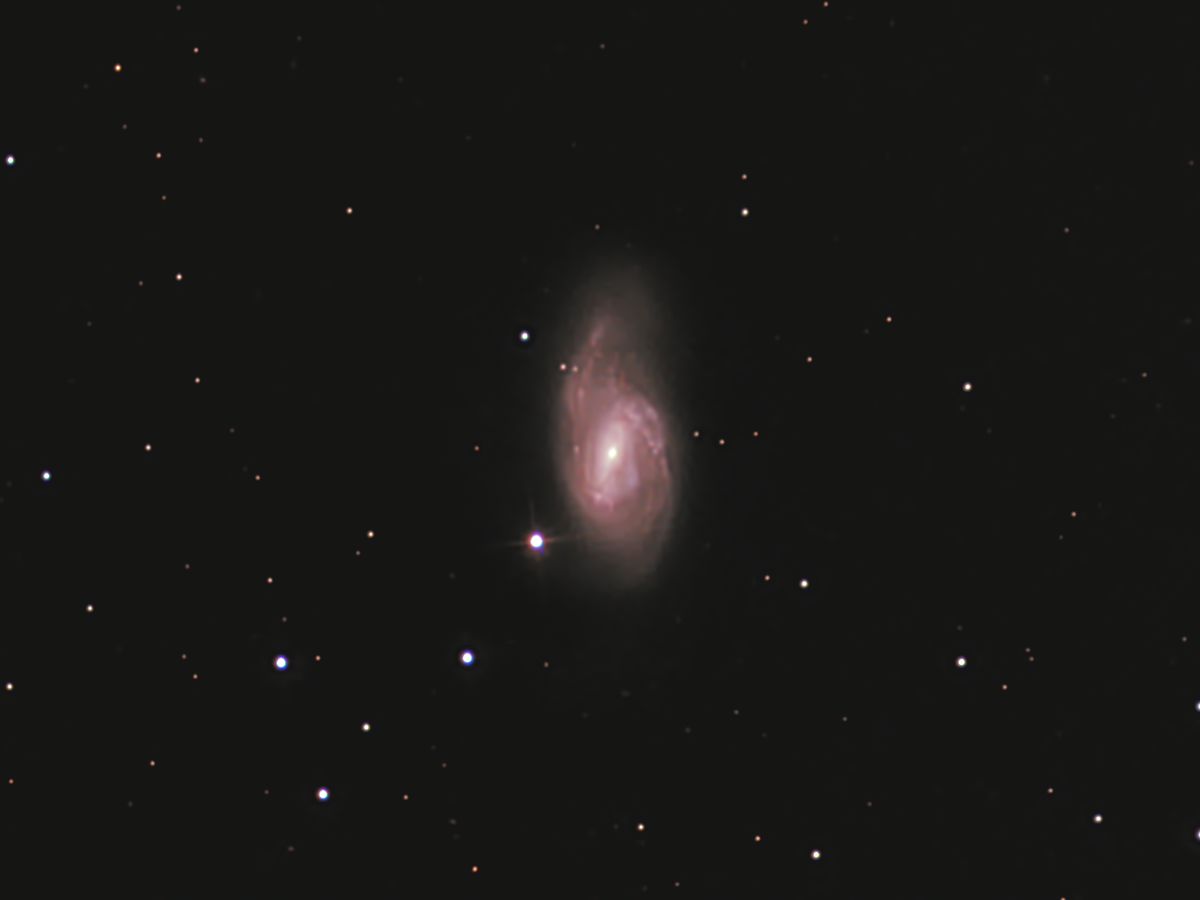
M66 is a spiral galaxy in the constellation of Leo.
- Details
- Category: Astrophotography
Page 14 of 23

